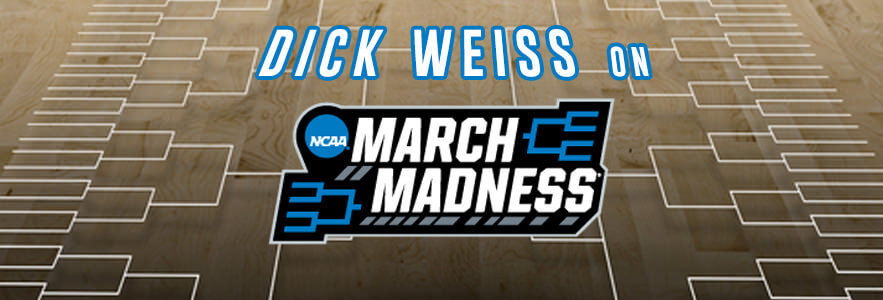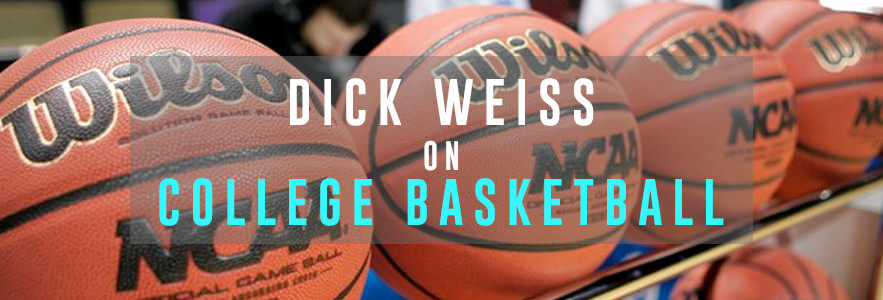While most decisions have long been made as to what club and whose hands athletes will be putting their basketball futures in, the impact and complexity of that critical choice requires constant scrutiny and re-evaluation. Now, don’t get me wrong. I’m certainly not advocating to keep a packed bag by the door or that absurd, fickle abandoning of ship mid-journey that seems to be virtually the norm these days. However, wisdom and foresight dictate that it’s much smarter to find the right person to say “I do” to up front rather than saying “I don’t” after the fact. Unlike marriage, there’s no sin in leaving the wrong situation at the basketball altar.
The seemingly never ending carousel of clubs and schools that athletes add and delete from their résumés often indicates an irresponsible vetting process on the part of those individuals influencing young players. Or, as in so many cases, a complete lack of objectivity about what their favorite athlete really needs in a program. As in almost any decision making process, subjectivity usually blindly arises from getting the cart before the horse. Too often we begin sorting through our available options without taking that invaluable step back to actually identify just what it is we might be searching for in the first place. In the case of club basketball and training it’s easy to forget that the ultimate goal of taking your game to the next level starts with…well…taking your game to the next level.
The non-scholastic recruiting calendar for NCAA Division I coaches has once again undergone irrational bypass surgery leaving an emaciated 18 days for non-scholastic evaluation. Three days in April, three more in May and segments of seven and five days in July with an eight day break between the two are all that’s left on the big stage for auditions. And rest assured, despite the love they so warmly share, you are far from the only recruit a program is looking at. They’re courting multiple prospects for multiple positions in multiple classes. Oh, many staffs will still “babysit” to some degree, but it now comes with a far greater price tag than ever before. Even the Big Dogs, who the new legislation obviously caters to, will have to be judicious with what they do during their abbreviated time of off campus work release. Unless you’re already a firmly established recruiting commodity or a promising, athletic 6-5 project, those limited moments in the evaluation spotlight necessitate offering up your absolute best each and every opportunity that you get. One bad performance at the wrong time with the wrong folks on the sideline may be all it takes to have the recruiting GPS recalculate the direction you might be headed.
Before we move on, let’s refine the definition of exactly what a bad performance might happen to be. Often, it’s not simply playing poorly in and of itself. Lackluster efforts pretty much speak for themselves. With many athletes it can also be the failure to demonstrate measureable progress. Few things scare college coaches more than players continuing to perform as they did the previous summer despite nine months of work and a long high school season. The word “plateau” is an alarming red flag word in most recruiting vocabularies and a glaring Scarlet Letter on the warm-up of the coaches and trainers supposedly in an athlete’s corner.
A bad performance can also be the continuing failure to address a known fundamental flaw or skill deficiency. Demonstrating four out of five things exceptionally well doesn’t mean that a single, ongoing Achilles Heel might not be the sole rational for recruiters to go a different direction. A player who can’t use her left as a middle schooler and still refuses to do so as a junior is making a sad statement about her commitment as well as her game. If her shooting touch continues to qualify for membership in the local bricklayers union as a senior, why should any coach believe she’ll put in the necessary time once on campus? The inability to spell defense, let alone play any, isn’t necessarily an academic observation. Players should be the ones losing more sleep over their shortcomings than the scholarship bearing coaches evaluating them. Don’t be fooled by accolades, recognition and big numbers on the stat sheet. It’s a sad but very real truth that success often can actually get in the way of critical skill advancement.
That leads to a second point. While exposure is paramount in non-scholastic basketball, so is consistent and constructive effort. Players have a tendency to revert to things that have “always worked” for them once the spotlight is on and the college folks are in the gym. That’s fine if those specific skills will serve her on the next level but it’s a dangerous concept to attempt to play one way at some events and shift into a different mode at another. Without exception, true elite players are always working on their game and genuinely know only one way to play the game.
A college recruiter wants to see where it is that a prospect is going…not where she’s been at the club or scholastic level. A player who gets 20 relying on a game or stagnated skills that won’t translate to the collegiate level doesn’t make remotely the same impression as the athlete willing to take some lumps test driving the requisite tools she’ll inevitably need down the line. There are players putting up big numbers every year in multiple statistical categories that will continue to wait for the phone to ring without the interest or level they were hoping for simply because of the shortsightedness of those around them.
And that leads back to the assessment of what to look for and who to trust. The landscape is littered with clubs, coaches, trainers, leagues and advisors whose already thin credential’s only shred of validity seems entrenched in the “have been there” claim. Being there isn’t enough. I’ve been to a lifetime of concerts and listen to music almost on a daily basis, but that doesn’t change the fact that a geriatric sea lion or a lighthouse foghorn sound much like Alicia Keys at the Grammys next to my tone deaf musical offerings. Anybody can sit in a gym or cash your checks but that doesn’t mean that they’re your All-Access Pass to athletic and academic success.
These days, the travel itinerary seems to be driving so many decisions that players are making rather than the basketball itself. There has to be a balance that provides optimum exposure but not at the expense of refinement, instruction and the expansion of skill sets. Clubs that started their “pitch” to you boasting of their won – loss record most likely have their focus and objectives more than somewhat askew. No doubt the restricted NCAA calendar dictates that it’s an integral part of any consideration but just 18 days between March and August requires that a club provides much, much more today.
Practice and training (Not inherently the same thing, mind you) need to be centerpieces in preparing an athlete not just for those limited exposure days but for their future on and off the floor. And who leads those efforts is an essential part of that decision as well. There are club coaches who have never held a coaching position in their lives or are no longer on the collegiate / scholastic sidelines for a lack of success. It doesn’t always mean that their niche might not actually still be in training but it’s very difficult to point the direction if you haven’t been there yourself. A player should be informed up front what the detailed plan, schedule and means will be across the entire club season to cultivate the next phase of her development. Ask and know the qualifications of anyone running a workout, practice or game. Failure to do so may lead to that next phase becoming little more than wishful thinking.
Do your homework on a club as well as it’s coaches. Don’t get caught up in the success of their highest profile players, that’s the easy part. Look at the history of those deeper in the rotation. Have they taken players from one level to another? Have they put players in a position to reach their goals? Are they getting their teams into the stronger events and in the tougher pools or are they running with the flavor of the month because they were bought with gear, hotel rooms and a check with a few more zeros on it? Players have to be challenged on an individual basis as well as with their teams when they take the floor. Sometimes that higher value comes with a higher financial cost. Sam’s Club and wholesale basketball doesn’t necessarily qualify as an EYBL program.
Circuits, leagues and whatever might be looming next on the non-scholastic horizon are defining many schedules for the upcoming travel season. However, is simply wearing the same uniforms or playing in the same events isn’t remotely enough. A depth of competition, coaching and established standards for excellence are essential when it comes to the development and advancement of the individual player. What’s best for a club or team may well not be what’s best for any one athlete. The “big picture” actually has a narrower scope than what some programs portray to players and their families. Unfortunately, some clubs and coaches are leveraging one or two athletes for the benefit of the whole team or their own status. This is one of those times where the name on the back of the uniform may well be just as or more important than the one on the front of it. When it comes to skill development, exposure and recruiting, there is no obligation for any one individual to carry the weight for others when her own window has already been narrowed enough by the powers that be.
With so much on the line, it’s imperative that no recruit or her family accept any sales pitch or offer in the non-scholastic marketplace at face value alone. Many times insecure adults are promoting themselves on the basis of the success of a teenaged prospect who was already on the radar and fast-track to success. Many are shamelessly validating themselves to new prospects by laying claim to individuals who may have attended a showcase, workout or tournament that, in reality, had little to do with their actual recruitment. Credibility comes only through the long term athletic and academic success of athletes that a program has vested in over time.
Getting it “right” has become more challenging for prospects and their families year after year. It’s no longer enough to just be in the right events, on the right floors and in front of the right crowd. The collection of opportunistic individuals exploiting the dreams of athletes while portraying themselves, their club or their services as the ticket to recognition, evaluation and scholarships continues to grow. At the same time there are plenty of legitimate programs providing valuable exposure, skill development and authentic leadership based on genuine experience and expertise. It’s the job of those closest to an athlete to help her find those individuals and hold them accountable. Taking a another look at those important choices in February isn’t being indecisive, it’s being responsible and remaining focused. Now, if we could just get some politicians to do the same thing…….
Mark Lewis is a national evaluator and photographer for Blue Star Basketball as well as the lead columnist for Blue Star Media. Twice ranked as one of the top 25 Division I assistant coaches in the game by the Women's Basketball Coaches Association (WBCA), he logged 25 years of college coaching experience at Memphis State, Cincinnati, Arizona State, Western Kentucky and Washington State. Lewis serves as a member of the prestigious McDonald’s All-American selection committee as well as the Naismith College Player and Coach of the Year committees.






